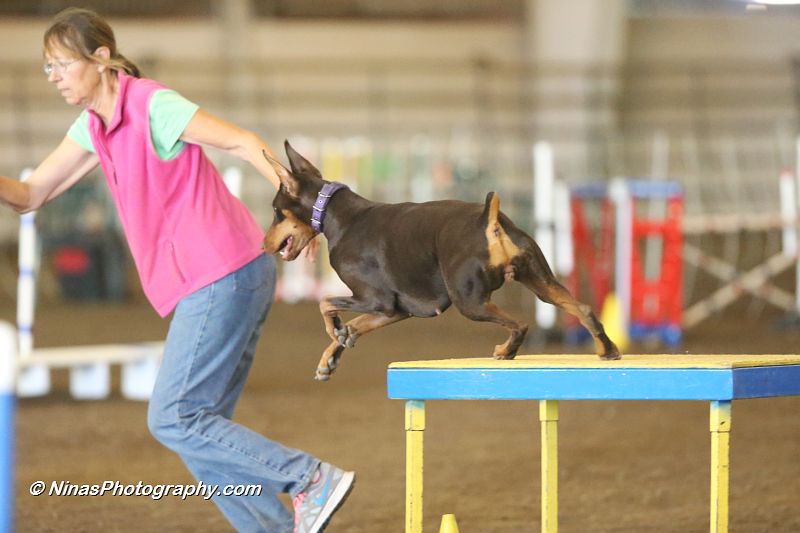Verbal v Body Language
When in state of heightened arousal, the instinct will override learned behavior. No matter how well a dog is trained to do something in a class situation, when stressed or highly excited, the hard drive (instinct) will always win out over the software (training).
Research was done by a biology professor at the University of Naples to determine if dogs learned and/or responded more favorably to verbal cues or visual (hand and/or body) cues. Multiple dogs were trained the same commands with verbal cues until they had a 100% accurate response rate. The same dogs were then taught to respond to visual cues until they had a 100% accurate response rate. The dogs were then asked to perform the learned behaviors with alternating verbal and visual cues to a 100% accurate response rate.
Once it was determined the dogs thoroughly understood the cues and the learned behaviors, their handlers gave them conflicting verbal and visual cues at the same time. The result was 97% of the time the dogs responded to the visual cues. i.e the handler gave the verbal cue to sit but the hand signal to lie down, the dog lied down. The 3% was attributed to dogs occasionally responding to the verbal cue to come that contradicted a visual cue. It was stated in the study review that the handler backed up (visual cue and momentum) while calling the dog and giving a contradicting hand signal. Therefore, it was actually a 100% response rate to the visual cues.

I’ve had the privilege to judge agility trials or teach handling clinics six weekends in a row. I watched thousands of runs in that amount of time. I watched the same mistakes all across the country – Alaska, Oklahoma, Washington, Oregon, Montana, and Minnesota. The most common mistakes include conflicting verbal and visual cues.
The following are examples of common causes of faults during agility runs:
- Handler sets dog directly in front of the first jump. The intent is to send the dog straight ahead to the next obstacle. The result is the dog takes an off course obstacle off to the side. Why? The handler said go jump, which means go forward. But, the handler did not have a lead out. The handler had to move around the wing. The action of moving laterally (visual cue) overrode the verbal cue to go forward.
- Handler sends dog to the dogwalk. The intent is to have the dog stop at the bottom of the contact zone until the handler releases him. The result is the dog sprouts wings and leaps off the descent ramp without touching the yellow. What happened? Handler called “wait”, “place”, “touch”, etc, to the dog that is charging ahead of him across the dogwalk. The handler is sprinting to catch up to the dog and is leaning forward to observe the contact performance. The handler’s forward posture and acceleration (visual cue) overrode the verbal cue to stop.
- Handler needs to cross to the dog’s other side to maneuver through the course. The intent is to send the dog over the jump as the handler crosses behind the dog. The result is the dog either spins in front of the jump or completely stops all forward motion. Why? The handler said jump, which means take the jump the dog is approaching. But, the handler was in front of the dog and had to stop moving until the dog jumped in order to cross behind the dog. The handler’s deceleration (visual cue) overrode the verbal cue to jump. Rear crosses should only be attempted if the dog is already in front of the handler.
Pay attention to your body. Watch skilled handlers. Watch videos of your own runs. Learn from trainers who understand body posture and momentum. When it comes to our dogs, actions really do speak louder than words.